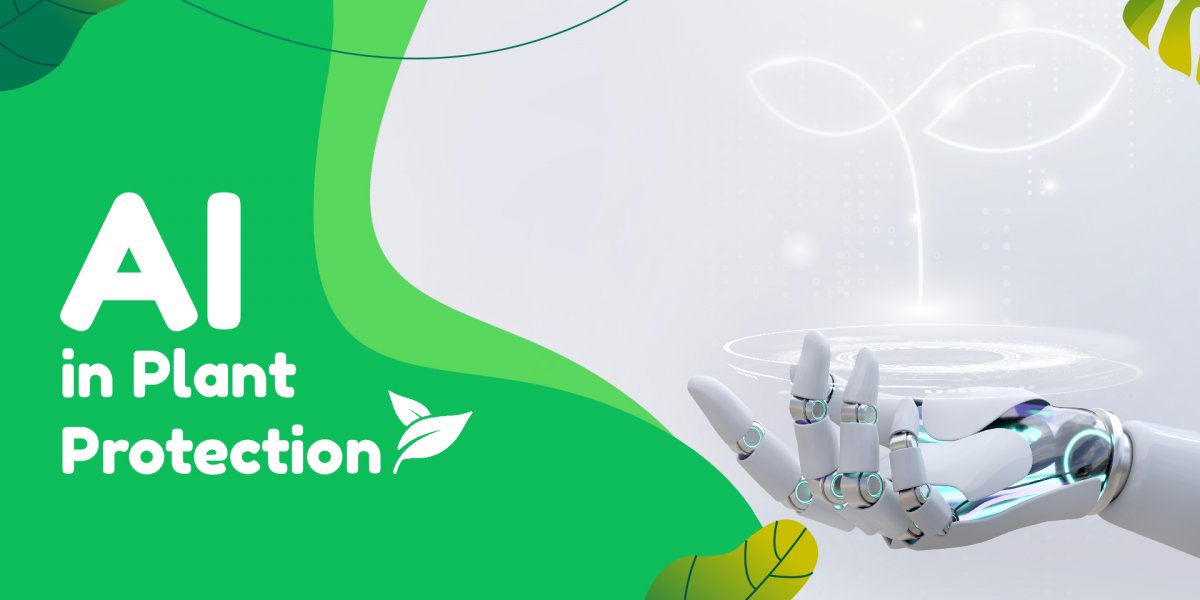We have all seen what AI technology has done for human beings. What about AI for plants? According to UN Food and Agriculture Organization (FAO) projections, feeding a world population of 9.1 billion people in 2050 would necessitate a 70% increase in overall food production between 2005–2007 and 2050. Only 4% of additional land is expected to be under cultivation by 2050. This puts an enormous strain on agriculture and farming to meet ever-increasing food demands. Feeding the rising global population amidst the unpredictable weather conditions, insufficient rainfall in many places, along with the biotic stresses, is a challenging task. Here is where artificial intelligence in agriculture will come into play.
Pests and crop diseases—two major problems for farmers
The two main causes of declining agricultural productivity every year are insect pests and crop diseases. The combination of these two causes global crop losses of roughly 20–40%. Many farmers lack the necessary knowledge and expertise to identify and control pests. This makes them heavily dependent on pesticide dealers for pest identification and elimination. Over-dependency results in excessive use of pesticides and insecticides for controlling pests. Overuse of pesticides causes harm to the environment as well due to water, soil, land, and air pollution. Pest identification and management is a complex process and involves in-depth support and knowledge beyond traditional agricultural practices. Early pest identification and timely use of the right management techniques will not only result in judicious use of pesticides but also save crops worth millions of dollars globally. Adopting advanced farming technologies like machine learning and artificial intelligence in agriculture can help with successful pest identification and timely management.
Role of AI in agriculture
- Artificial Intelligence (AI) is a robust technology that involves the use of computer systems and machines trained using AI algorithms to simulate human intelligence.
- AI for plants helps solve many complex problems that are impossible to do using traditional computing practices and human effort.
- Artificial intelligence farming offers valuable insights to farmers about key data related to soil conditions, climate, crop prices, rainfall, etc.
Some uses of artificial intelligence in agriculture
- Soil and crop health monitoring in real-time
- Prediction of crop yield
- Field monitoring
- Sustainable irrigation
- Wiser allocation of resources
- Real-time analysis of data such as temperature, water usage, soil conditions, weather conditions, etc.
- Improving agricultural productivity through the use of AI-generated seasonal forecasting models.
- Detecting plant diseases and pests on farms
- Analyzing market demand and forecasting prices
- Produce, harvest, and sell crops more efficiently.
- Reduced wastage of water.
- Solve the challenges for farmers, such as weeds, which reduce the crop yield, climate variation, etc.
Artificial intelligence farming with better pest management
A key aspect of boosting crop productivity in agriculture is the protection of crops from pests in the field. Various pest management techniques are implemented by farmers for effective pest management. However, with the advancement in technologies, AI for plant protection from pests and effective pest management has been used.
Easy crop scouting
AI can help assist the scouts by providing them with exact descriptions of the pests and their precise locations in the crop fields.
Determine the pest problem as soon as possible
- Implementing artificial intelligence in farming can help predict the pest problem early.
- Early detection, providing on-time support, and the right pest management strategies can protect the crops.
Spotting the right pest on the field
- For successful pest management, diagnosing the right pest in the field is crucial.
- Implementing artificial intelligence in agriculture can help with regular pest monitoring in the field.
- With AI techniques, the correct pest can be identified, thus allowing farmers to save crops by following the right pest management strategy.
Large-scale pest monitoring and surveillance
By implementing AI drones, large-scale pest monitoring and surveillance is possible. The AI drones can also help spray pesticides effectively over a larger area to ensure complete crop coverage.
Various AI technologies are used for the protection of crops
- Machine learning
- Artificial Neural Network (ANN)
- Image processing
- Remote sensing
- Robotics
- Data-driven systems
- Internet of Things (IoT)
- Support Vector Machine
AI for plants is still an emerging technology in the field of agriculture. AI-based models, machine learning techniques, and IoT sensors can provide real-time insights to farmers from the field. Advanced farming technology enables us to boost crop production by making farming more efficient. Pest monitoring, timely and accurate pest identification, and implementing the right pest protection measures are all possible due to artificial intelligence in agriculture. Although the use of AI for plants has shown really promising signs, there are some challenges. The two main challenges in the use of AI for plants are the limited or non-availability of data and developing new AI algorithms. Despite these obstacles, AI in plant protection in agriculture is gradually becoming a reality.

